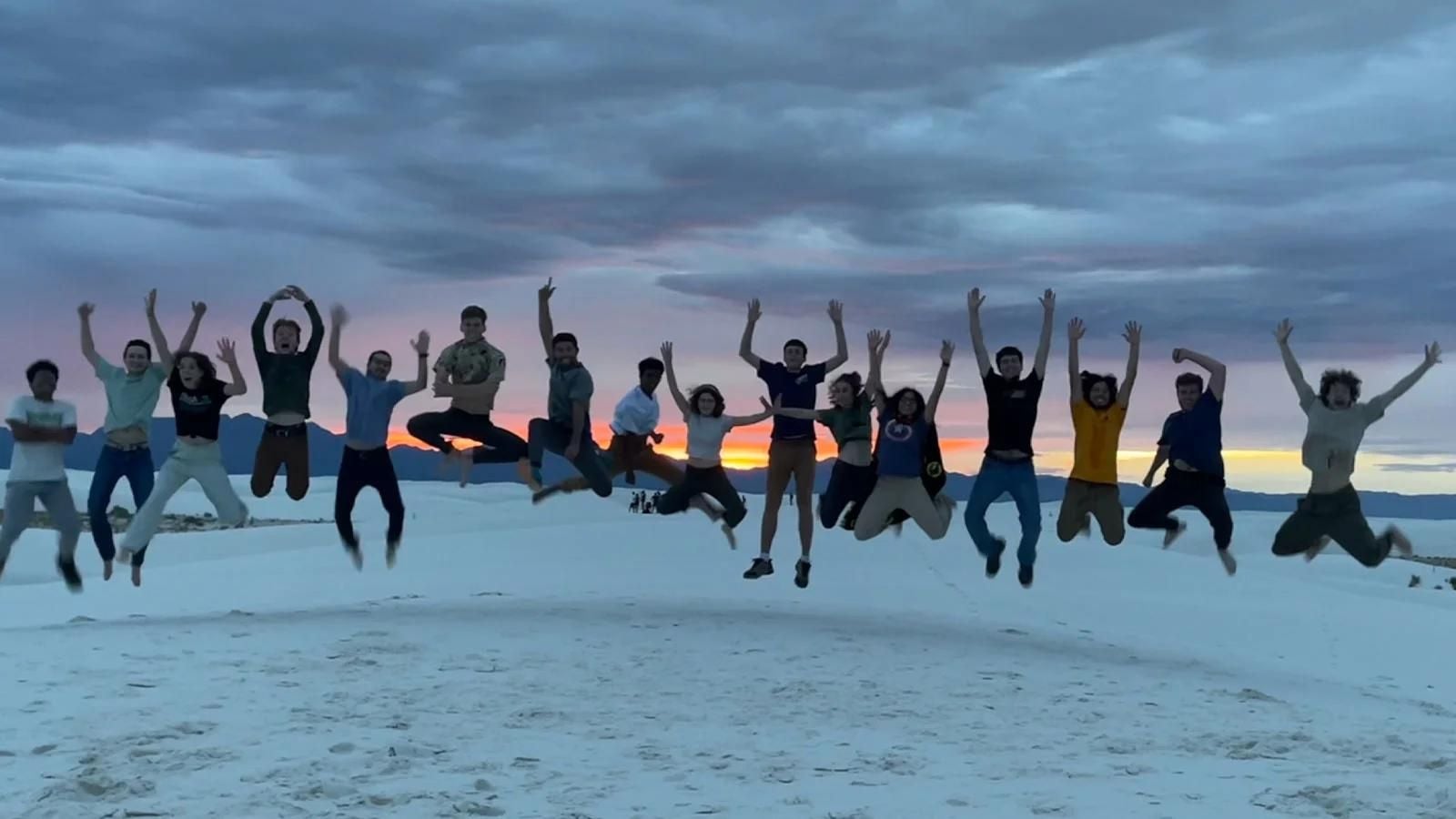Rice University’s student rocketry team, Rice Eclipse, won first place in the 30K Student Researched and Developed (SRAD) Hybrid Category of the 2024 Spaceport America Cup, which was held in Las Cruces, New Mexico this summer. The Spaceport America Cup is the world’s largest intercollegiate rocket engineering conference and competition; this year, 66 international teams and 86 domestic teams across six continents participated.
According to Ian Rundle, senior in computer science and outgoing Rice Eclipse president, “Of all the divisions, the SRAD Hybrid is the most challenging category.” It requires an entirely student-designed hybrid rocket engine—using solid fuel and liquid oxidizer—to achieve a target altitude of 30,000 feet. Archimedes reached an apogee of 26,000 feet. The recovery team located Archimedes fully intact and undamaged, which was the first completely successful Spaceport recovery effort in Rice Eclipse’s ten-year history.

The result of nearly a decade of research, testing, and iteration, Archimedes was completely designed and fabricated in-house by the Rice Eclipse aerodynamics team and powered by Titan II, the team’s in-house developed hybrid rocket engine. The student rocketry team is the first in Texas to launch a student-developed hybrid engine.
Kaz Karwowski, executive director of Rice Center for Engineering Leadership (RCEL) and the sole faculty advisor in the club’s history, pointed out that this milestone reflects the quality of education offered at Rice University. “The level of technical complexity in this project shows that Rice has prepared the students in Rice Eclipse to think critically and develop new ways of doing things,” said Karwowski.
“Thanks to the countless hours in the Oshman Engineering Design Kitchen (OEDK) and with the support of numerous Rice departments, private sponsors, and especially the OEDK, we put Rice on the map in the rocketry and aerospace industry,” said Rundle.
OEDK is a 20,000 sq. ft. space for undergraduate students which provides ready access to design tools, prototyping equipment, computational facilities, meeting rooms, and ample space for prototype design and development. Students majoring in bioengineering, chemical and biomolecular engineering, civil and environmental engineering, computational and applied mathematics, computer science, electrical and computer engineering, materials science and nanoengineering, mechanical engineering, and statistics have the opportunity and means “to design, prototype and deploy solutions to real-world engineering challenges.”
Karwowski noted that this kind of hands-on experience that OEDK and Rice Eclipse provide of “designing, building, testing, and writing safety protocols in an interdisciplinary setting replicates the type of work [students] may do in industry as professionals.”
Rice Eclipse has expanded from five to over 50 members since its founding in 2014, and students’ majors include materials science, computer science, mechanical engineering, electrical engineering, chemical engineering, and economics. Its mission is to “enrich the undergraduate and graduate education of our members with project-based learning to develop cutting edge aerospace technologies and develop launch vehicles for intercollegiate rocketry competitions, rocket engines, avionics hardware and software.”
As President of Rice Eclipse, Rundle managed the finances and student body relations for the rocketry team which is the largest engineering design club at Rice University. He was responsible for planning meetings with club officers to construct and launch Archimedes, the team’s most complex rocket to date. Rundle leveraged his computer science education with several other team projects, including an autonomous drone payload for rockets and a mission control dashboard.
The incoming Rice Eclipse president for 2024-2025, Daniel Ramirez, a junior in mechanical engineering, said that, “With this win, we plan to return to Spaceport and build a rocket capable of reaching the Kármán line at 275,000 feet.
More information about Rice Eclipse’s award and the full Rice Eclipse news article can be found here. Video coverage of the team accepting their award is available here, at approximately 2:19.

